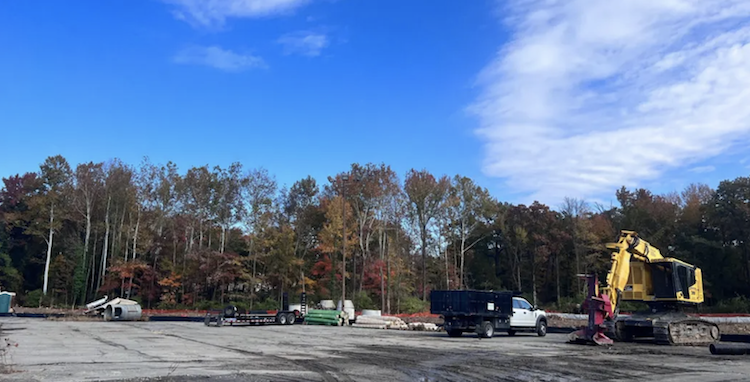Innovative P3 May Help Chesapeake Bay Stick to It’s Diet
December 5, 2014White House and EPA Recognize Prince George’s County Stormwater Retrofit Public-Private (P3) Among Most Innovative in the Nation
April 3, 2015The Washington Post
Arelis R. Hernández
04/02/2015
While the debate to repeal or ease storm water fees rages in Annapolis, Prince George’s County is not waiting for a resolution to start putting the money to use.
The Department of the Environment has entered into a million-dollar partnership with private company Corvias Solutions to manage Prince George’s storm water infrastructure. The project requires retrofitting thousands of acres of public and private land with green infrastructure designed to capture and treat runoff before pollutants flow into the Chesapeake Bay.
The partnership is critical to two Prince George’s goals: 1) meet strict mandates to reduce pollution in the next decade; 2) pioneer a storm water industry in the region that officials expect will stimulate economic development.
“Together, Prince George’s and Corvias are on the ground floor of an industry that is about to explode,” said Adam Ortiz, director of the county Department of the Environment. “There is increasing demand for clean water not only across the United States but across the world.”
Under the federal regulations, Prince George’s must clean and treat 15,000 acres of polluted runoff by 2025 — a costly and labor-intensive endeavor that will likely exceed deadlines, county leaders said. Working with Corvias offers Prince George’s an opportunity to “reduce the cost and get it done quicker” without assuming all the risk, said Tad Davis, former managing director of Corvias Solutions.
The company will take care of all the planning, design, execution and maintenance involved with installing rain gardens, permeable pavement, green roofs and other storm water filtering devices available in the market. Corvias will also be responsible for mentoring small and minority-owned businesses and training the workforce for the new industry. Prince George’s Community College is on the verge of graduating its second class of storm water management students.
Typically, these public-private partnerships involve companies putting up their own capital to help pay for the deal. But in the pilot plan, Prince George’s will provide the financing. Corvias will operate using the funds collected from the storm water fees Gov. Larry Hogan (R) derided as the “rain tax,” to retrofit 2,000 acres of land in three years.
So how is this partnership any different from regular government contracts? Corvias does not get paid unless they meet the goals: “We are taking on that risk to get the work done,” Davis said.
“They have to be on time, be on budget and meet local county-based procurement goals,” Ortiz said. County officials can terminate the contract at any time and have the option of seeking private financing in the future.
As Corvias works, the Department of Environment will be conducting their own internal projects to retrofit another 2,000 acres to compete with the company: “We are going to compare how well they do to our own work,” Ortiz said.
But he is not confident the government can outdo private industry.
“Quite frankly, the government does not excel at efficiency,” Ortiz said. “We are keeping it real about our strengths and weaknesses … and bringing a private partner whose strengths compensate for our weaknesses.”
The project officially launched this week and will focus its efforts first on participating churches, schools and other county-owned buildings.



